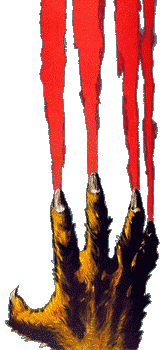



   |  |
|
During the Fifties, juvenile delinquency provoked feelings of anxiety and horror. Benjamin Fine found the title of his 1955 book 1,000,000 Delinquents (Cleveland: The World Publishing Company, 1955) in his prediction that by the end of the decade the United States would be the home to one million teenage criminals. Fine’s book, like other studies of delinquency published in the Fifties, sought to locate the causes of the delinquency problem. While commentators would find a variety of causes for this problem, the most central and disturbing explanation located the problem within authority structures -- especially authority structures within the home. Fine held fathers accountable for the problems of juvenile delinquency. He commented that "First of all, a child needs a ‘father figure.’ This means that he needs to identify himself with a person stronger and wiser than himself. Boys especially need to identify themselves with their fathers" (60).NOTE 1
For Fine, as for other thinkers who tried to understand the social problem, the oedipal model that held the father accountable for his son’s behavior also held accountable all the fathers of American society. Fine said, "If Billy ‘goes wrong,’ the finger of blame can be pointed in just one direction: at society -- at you and me -- for having given him no chance to ‘go right’" (105). Fine’s argument is congruent with another commentator on delinquency, psychoanalyst Robert Lindner, whose book Rebel Without a Cause (New York: Grove Press, 1944), brought the concept of the teen rebel into American consciousness. Lindner argued that the rebellious psychopath derives his behavior from "a profound hatred of the father" (8). Also, like Fine, Lindner accused not just individual fathers, but the fathers of society, the authority figures: "modern American society errs in failing to provide the kind of substitute for self-expression which in other times and other cultures drained off a considerable portion of behavior opposed to the best interests of most people" (14). If mainstream films such as Rebel Without a Cause finger the father as the cause of teenage angst, horror films frequently go further by locating the psychopathic disease not in the teenager at all, but in an external force, or, more frighteningly, within authority itself.NOTE 2 For horror films, authority frequently does not so much fail; it willfully creates monsters.

Page One: Introduction | Page Two: The Giant Gila Monster | Page Three: The Blob
|